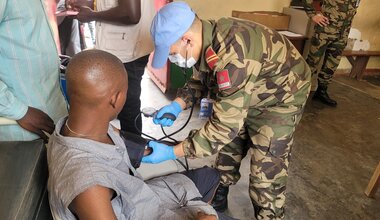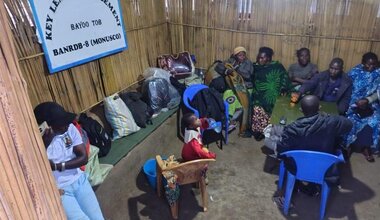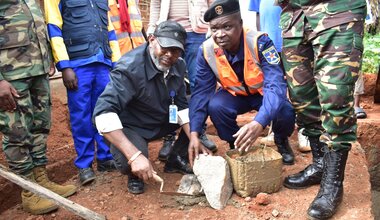UN is bracing for the stabilization in Tanganyika in prelude to Monusco exit
MONUSCO triggered the process for its exit from Tanganyika Province a few months ago. In accordance with the exit plan drawn up for this purpose, the United Nations Mission will no longer have any presence in this province of the Democratic Republic of Congo (DRC) as of June 30, 2022.
In this perspective, the Deputy Special Representative of the UN Secretary-General, Resident Coordinator and Humanitarian Coordinator, David McLachlan-Karr, led a United Nations delegation from September 29 to October 1, 2021, in Tanganyika.
The objective of this mission was to participate with local actors in the identification of the priorities on which the United Nations as well as the national and provincial authorities must focus within the framework of the Mission’s phased, responsible and sustainable excit.
"This mission also aimed to identify areas for which increased support from bilateral and multilateral partners will be necessary, as well as a strengthening of the presence of the United Nations Country Team in Tanganyika, particularly in the area of development", indicated, Wednesday, the Mission’s Spokesperson.
Upon arriving in Kalemie, the provincial capital, on September 29, the delegation met with the provincial authorities, various civil society actors, women's groups and youth representatives, national and international NGOs, as well as as Agencies, Funds and Programs already present in the province.
Discussions with all the interlocutors focused on the sustainability of the UN country team’s support to all the local partners, after MONUSCO’s exit.
Mai-Mai’s threats to civilian populations
On September 30, David Mclachlan-Karr and his delegation traveled to Kabeya Mayi (34 km north of Nyunzu) to assess the security and humanitarian situations in this area where local militiamen also known as Mai-Mai are still active.
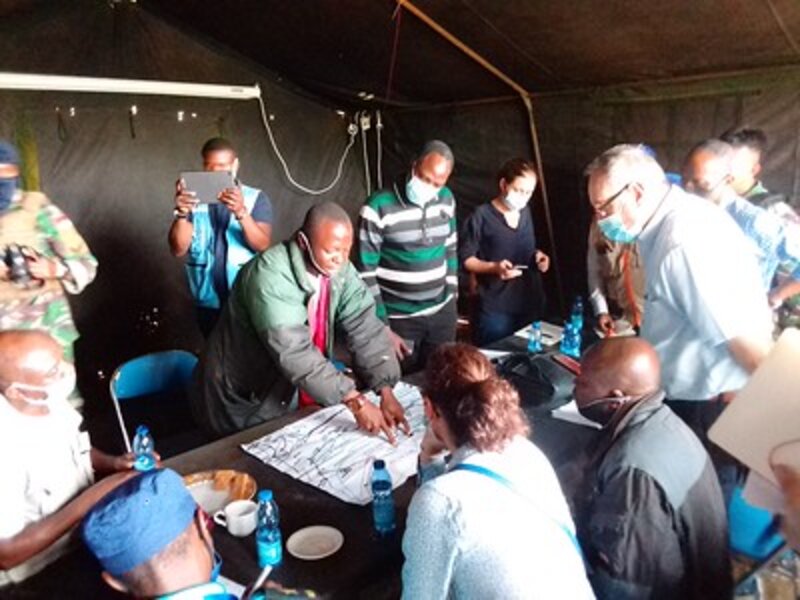
There too, the delegation met with local authorities and civil society representatives. The interlocutors briefed the deputy head of MONUSCO on the overall security and humanitarian situations.
According to information gathered from community leaders in Kabeya Mayi, members of the Mai-Mai Apa Na Pale (MMAP) group continue to pose a threat to security in the Nyunzu area. Their abuses caused the displacement of around 1,651 households (over 7,000 people) to Kabeya Mayi.
Civil society in Kabeya Mayi recommended that MONUSCO Force be deployed in Kalima (53 km northeast of Nyunzu), where Mai-Mai Apa Na Pale members are very active.
The Force is deploying in Kabeya Mayi
All of these requests had resonated favorably with MONUSCO Force Commander, General Marcos Afonso Da Costa. Indeed, MONUSCO deployed a Static Combat Detachment (SCD) in Kabeya Mayi (34 km north of Nyunzu) on September 10.
To make sure of the operationalization of this base, MONUSCO Force Commander visited Kabeya Mayi on September 24. During discussions with civil society actors and the population of Kabeya Mayi, he pledged to support efforts to raise awareness among armed groups for their surrender.
Indonesian peacekeepers deployed temporarily in this area will support the awareness-raising efforts of local armed groups, so that they join the disarmament, demobilization, community reintegration and stabilization of ex-combatants (PDDRC-S) program. "We applaud the holding of this meeting with the two MONUSCO officials and such an initiative must be perpetuated in order for us to work together in the best interest of all for a definitive and lasting peace in our localities", declared a local resident.
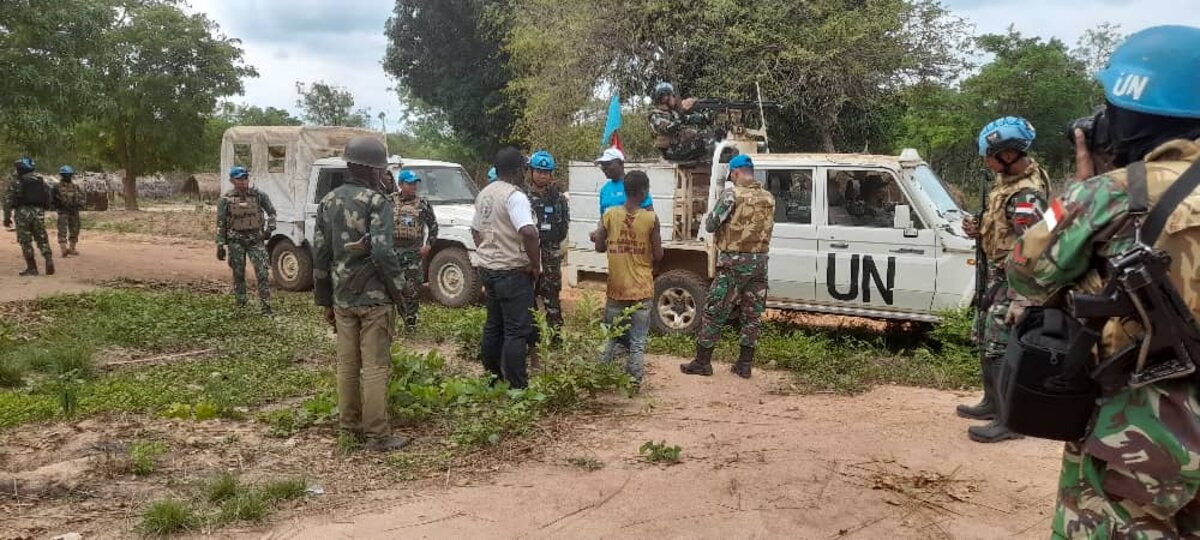
Enhance Cohesion between Communities in conflict.
It should be noted that since the deployment of MONUSCO temporary base in the area, a multisectoral team from MONUSCO office has been working in Kabeya Mayi in Nyunzu territory to support the implementation of the stabilization process in the area. The objective is to improve the security environment and encourage the armed elements to participate in the PDDRC-S Program. It is also about reinforcing community cohesion and state authority in the North Lukuga sector, in the context of MONUSCO's exit from Tanganyika province.
In addition, for MONUSCO, it is important to consolidate the efforts resulting from MONUSCO-Provincial Authority’s partnership in the context of the conflict resolution between the Twa and Bantu communities that occurred in January 2020 and which aggravated the populations’ vulnerability.
To achieve this, several activities have been planned with local authorities and partners. They mainly focus on the sensitization and capacity building component of the pacification process. Conflict resolution, peaceful cohabitation, dialogue and living together are aspects that are highlighted as well as the revitalization of protection mechanisms and tools.
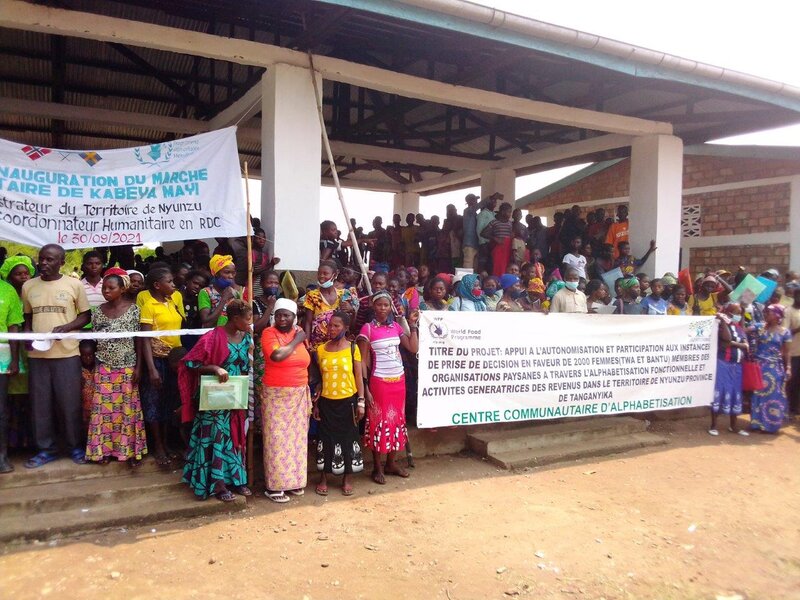
For the United Nations, the territory of Nyunzu remains a priority area for the implementation of MONUSCO's exit strategy from Tanganyika. The UN remains attentive to the security and humanitarian situations in this area.
 UN
UN United Nations Peacekeeping
United Nations Peacekeeping




